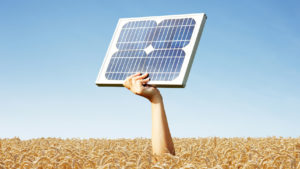Generators may be squeezed for another fee, but this one could be good for them

Will it be as bad as broccolli is to children? Pic: Getty
Power generators could be on the hook for transmission costs, as regulators and network operators eye changes to the current system that puts those costs on end users.
But that may not be all bad for the raft of small companies looking to make their fortunes from renewable energy in Australia.
Rule maker Australian Energy Market Commission (AEMC) envisages that it could allow companies like Windlab (ASX:WND), which have lost project investors over surprise costs associated with grid weakness, or developers like Tilt Renewables (ASX:TLT) which have projects in sub-optimal grid areas, to take control of the way they connect to the grid.
Wind and solar projects tend to be built in areas where the grid isn’t so strong – because the wind doesn’t conveniently blow nor the sun shine next to the ageing coal power plant infrastructure around which the grid has been built.
Now, as new electricity generation is brought on in places that need new or extra investment put into transmission infrastructure, questions are being asked about why end users are paying for that, says Merryn York, CEO of network owner Powerlink.
“What we’re seeing now is a big shift in generation input and potential need to invest in transmission, but not driven by anything customers are doing, by changes in the way in which generation is occurring on the supply side,” York told Stockhead.
“So you’ve got to ask the question, is customers still paying for that the right answer when they’re not causing that? I think it’s a conversation we need to have.”
York has “challenged” her employees not to expand the company’s existing grid network to meet peak demand and find ways that don’t involve sinking cash into a 50-year asset, at a time when Australia’s energy mix is changing so fast.
This might actually help your power bill too
Network costs have historically been borne by consumers.
A review by the competition regulator last year found that network costs made up over a third of bill increases in the decade to 2016/17.
But if the grid is being built or brought up to scratch to benefit generators, it’s worth asking who should now be paying for it, AEMC boss John Pierce said at the Australia Energy Week conference yesterday.
The AEMC finished its first Coordination of Generation and Transmission Investment review (CoGaTI), in December last year, and launched the next into access and charging in February.
The first suggested letting generators pay for transmission infrastructure in exchange for access, allowing them to influence grid planning decisions; and look at how to better align grid costs with the end users and the generators – both are ultimate beneficiaries.
The second CoGaTi review is looking at reforming the way generators access and use the grid, and reviewing how network owners charge for use to recover building costs.
Clawing back the cash
There are a range of ways network operators can get their money back on grids, says Paul Italiano, chief of NSW grid operator Transgrid.
“In the NEM, for better or worse, we’ve made the decision in the past that the transmission system is there to allow for an effective, competitive wholesale market, which eventually benefits consumers,” he told Stockhead, although generators are required to contribute some of the cost.
- Subscribe to our daily newsletter
- Join our small cap Facebook group
- Follow us on Facebook or Twitter
In Europe, national grids can trade energy into the continental market within a cap and a floor.
In the US, interconnection points are often unregulated and the owner can trade the energy coming in and going out, and take advantage of the price arbitrage, but that’s not an option for Australia.
Pumped hydro storage is also treated as a grid capacity asset in some parts of the US and owned by network operators – not power producers.
York says they haven’t yet tried battery storage as a way to manage the grid, but it could become part of their tool kit.
It’s a method battery and microgrid owner Tag Pacific (ASX:TAG) has been all over since 2017: it proposed building NSW’s biggest battery as part of a future-proofing plan by the network operator.
UNLOCK INSIGHTS
Discover the untold stories of emerging ASX stocks.
Daily news and expert analysis, it's free to subscribe.
By proceeding, you confirm you understand that we handle personal information in accordance with our Privacy Policy.








